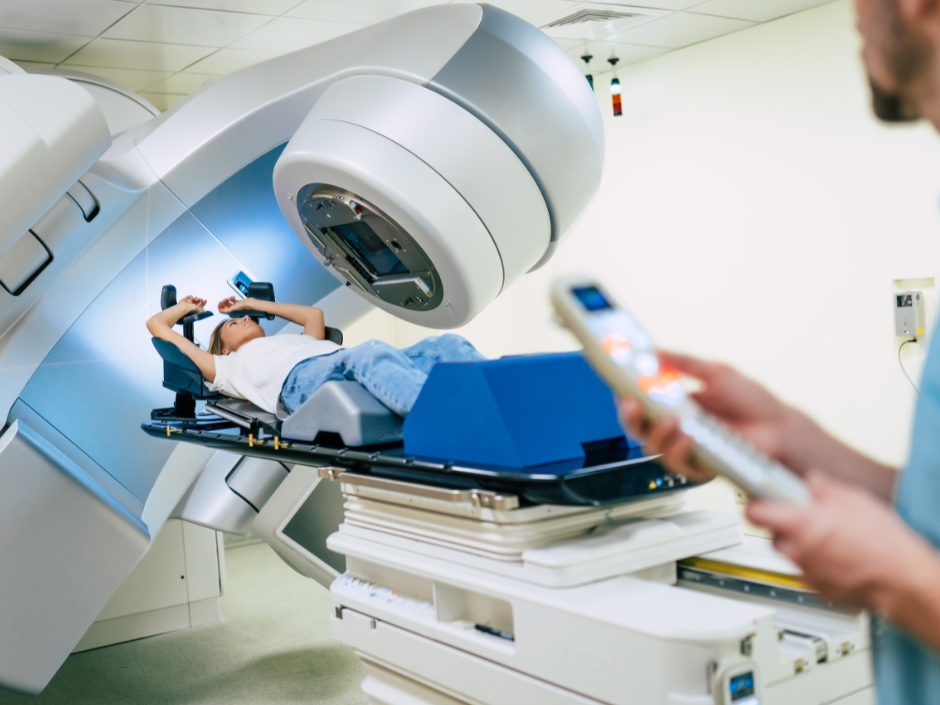By Dr. Neeraj Dhingra, MD, DNB, Consultant – CyberKnife Radiosurgery and Radiation Oncology, Ruby Hall Clinic, Pune
Cancer Care Through Radiation Oncology: An Advanced Approach
Cancer is a complex disease that occurs when cells grow uncontrollably in the body. With advances in science and technology, various treatment options have emerged, and radiation therapy stands out as one of the most crucial methods. Radiation oncologists are specialized doctors who utilize high-energy rays, like X-rays, to destroy cancer cells while minimizing harm to surrounding healthy tissues.

What Does a Radiation Oncologist Do?
Radiation oncologists are responsible for planning and administering radiation therapy to treat cancer. They use advanced equipment like linear accelerators to direct high-energy beams at the tumor, aiming to destroy cancer cells while protecting healthy tissue.
Uses of Radiation Therapy in Cancer Treatment:
- Curative Treatment
Radiation therapy can completely cure certain types of cancers, such as nasopharyngeal (nose and throat), laryngeal (voice box), and cervical cancer. In some cases, radiation is combined with chemotherapy for more effective results. - Post-Surgery Treatment (Adjuvant Therapy)
After a tumor is surgically removed, radiation therapy can help prevent the cancer from returning. It is commonly used for cancers like brain, breast, mouth, and other types. - Pre-Surgery Treatment (Neoadjuvant Therapy)
In certain cases, radiation therapy is administered before surgery to shrink a tumor, making it easier to remove. This is especially useful for cancers in the rectum or esophagus. - Symptom Relief in Advanced Cases (Palliative Care)
For advanced cancers that cannot be cured, radiation therapy is used to provide symptom relief. It helps reduce pain, shrink tumors causing discomfort, or control bleeding, especially in cancers affecting the bones or spine.
Advances in Radiation Therapy
Modern advancements in radiation therapy have improved the precision and effectiveness of treatments. Techniques like Intensity-Modulated Radiation Therapy (IMRT) and Image-Guided Radiation Therapy (IGRT) allow doctors to precisely target tumors, minimizing impact on surrounding healthy tissues.
CyberKnife Radiosurgery is another significant development. This non-invasive technique delivers high doses of radiation with pinpoint accuracy, making it ideal for treating tumors in sensitive areas such as the brain, lungs, and prostate, where traditional surgery may not be an option.
How Does Radiation Therapy Work?
Radiation therapy works by damaging the DNA in cancer cells, which prevents them from growing and dividing. While normal cells can sometimes recover from radiation damage, cancer cells typically cannot, leading to their destruction.
The treatment usually spans several weeks, with daily sessions lasting 10 to 15 minutes. Most patients receive treatment five days a week for a period of one to six weeks, depending on their specific condition.
Side Effects and Care During Treatment
Radiation therapy is painless and bloodless, but it may cause side effects as the treatment progresses. These side effects are usually limited to the area being treated. For example, patients receiving radiation for oral cancers may experience mouth ulcers or dry mouth. These effects are usually temporary and can be managed with medications and proper care.
Conclusion
Radiation oncologists are vital in the fight against cancer, using advanced radiation technologies to deliver targeted treatment with fewer side effects and better outcomes. If you or a loved one is facing cancer, radiation therapy could be a crucial part of your treatment plan. Always discuss your options with your oncologist to make an informed decision about your care.